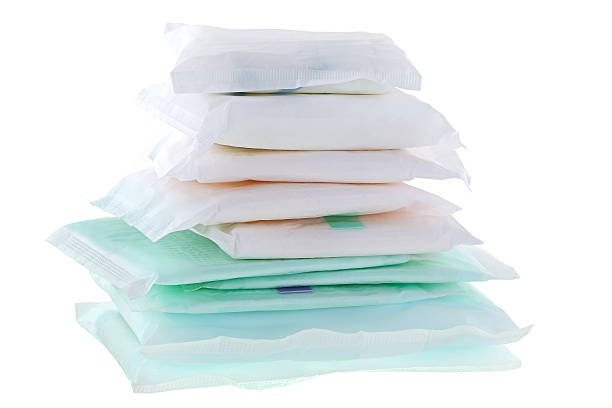Disposable pads, commonly referred to as sanitary napkins, are often believed to be sterile/sanitized (like hand sanitizer, it kills germs right?). They come in nice plastic packaging, each one packaged individually, seems almost...medical.
We like to think because they are bright white (bleached paper/plastic) and packaged individually(wasteful) that disposable products are sterile. In reality the plastic wrappers are often not sealed and are just folded over creating the illusion of sanitary packaging. They are made in factories - not in medical grade conditions - just like many other packaged goods destined for the shelves of supermarkets everywhere.
The definition of Sanitary
(as provided by: https://dictionary.cambridge.org/dictionary/english/sanitary):
1. Clean and not dangerous for your health, or protecting health by removing dirt and waste, especially human waste.
2. Used to refer to things used by women during their period
Sanitary is not the same as sterile so be sure to not confuse the two. Sanitary is related to being overall clean (with an allowable amount of micro-organisms). Sterile means to remove 100% of micro-organisms. For disposable pads to be sterile, they would have to be supplied in fully sealed sterile packaging (which they are not).
Tampon user? Same thing! They are not sterile and are inserted inside your body. Did you ever hear about the moldy tampon? Read this eye opening post. A look at the websites of some of the major disposable brands will demonstrate that you will not even find the word "Sanitary" on their websites in regards to their pads. They don't claim to be "sterile" nor do they call themselves "sanitary" yet people assume that they are.
Now let's talk cloth pads.
A common concern for people who are new to the idea of cloth pads is "How clean can fabric really be?". "Are you sure it gets clean all the way through?" "How hygienic are reusable pads?"
Rest assured! Our cloth pads truly can wash clean straight through all of the layers! The fabrics we use in Tree Hugger Cloth Pads were chosen very carefully. We chose the very best fabrics manufactured for the cloth diaper industry and they are unlike any other. Our first few prototypes had inner cores of cotton and bamboo but they made for a very dense pad that was hard to wash through all the way and then would take way too long to dry all the way through. Zorb is our super thirsty inner core fabric that was designed in Canada and is now made in the USA. Zorb is non-allergenic, easy to clean and free of anything mysterious or unknown. It has two jobs 1) to absorb 2) come clean. The loosely weaved fibers of Zorb allow optimum cleaning either by machine or by hand.
Still unsure? This is one of my (Crystal) bamboo topped tie dye pads used for many periods and washed for many years(5-6). By customer request I sacrificed this fully functioning (used) pad so that we could dissect it and see what it looks like inside.



Yes you can bleach your pads once and a while but I do not. It will fade your beautiful colors and can be hard on the fabric. The best way to clean our pads if you worry about them is to squirt on some good old Peroxide from the drug store. The Peroxide will bubble up where there is blood. Once the Peroxide fizzes out rinse with cold water and wash as normal. Even hospitals use peroxide on blood stains!
Disposable pads were invented for convenience not because there was a need for something more "sanitary". Compared to the belt and pin system "rags" women had back in the day I'm sure they were thrilled! Cloth pads have come a long way however and many women find them more convenient than disposables as you never run out, they are easy to use and easy to wash.
They are no different than washing and re-wearing your underwear!
Disposable "sanitary" pads may not be as "sanitary" as you might have thought. At the very least, I hope this post gets you thinking about what you put on or in your body and how clean it may be. Cloth pads are certainly a viable option for women seeking a more natural and clean alternative to disposable pads.

